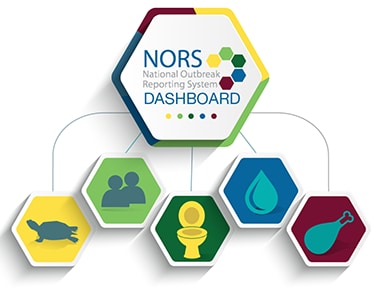National Botulism Surveillance
The CDC Botulism Consultation Service, the Alaska Division of Public Health, and the California Department of Public Health provide clinical consultations on suspected cases of all types of botulism except infant botulism. These agencies are the only sources of antitoxin for non-infant botulism in the United States. The California Infant Botulism Treatment and Prevention Program provides clinical consultations on suspected infant botulism cases; it is the only source of antitoxin for infant botulism in the United States. Together, these clinical consultations provide expert guidance to clinicians and support the collection of epidemiologic and medical information for all suspected botulism cases reported in the United States.
Transmission Categories
For surveillance purposes, CDC categorizes human botulism cases into four transmission categories:
- Foodborne botulism
- Wound botulism
- Infant botulism
- “Other” botulism: includes adult intestinal colonization, iatrogenic botulism, and unknown routes of transmission
Learn about the different kinds of botulism >
Annual Summaries
- 2019
- 2018
- 2017
- 2016 [PDF – 10 pages]
- 2015 [PDF – 8 pages]
- 2014 [PDF – 5 pages]
- 2013 [PDF – 8 pages]
- 2012 [PDF – 8 pages]
- 2011 [PDF – 7 pages]
- 2010 [PDF – 8 pages]
- 2009 [PDF – 8 pages]
- 2008 [PDF – 10 pages]
- 2007 [PDF – 11 pages]
- 2006 [PDF – 9 pages]
- 2005 [PDF – 11 pages]
- 2004 [PDF – 9 pages]
- 2003 [PDF – 9 pages]
- 2002 [PDF – 9 pages]
- 2001 [PDF – 9 pages]
For more information on Clostridium botulinum outbreaks reported to CDC:
- Go to NORS Dashboard.
- Set your search parameters, being sure to select “Clostridium” as the etiology.
- At the bottom of the page, select “Download current search data.”
- Sort by “Genus Species” or select the arrow next to that heading to select only “Clostridium botulinum.”
